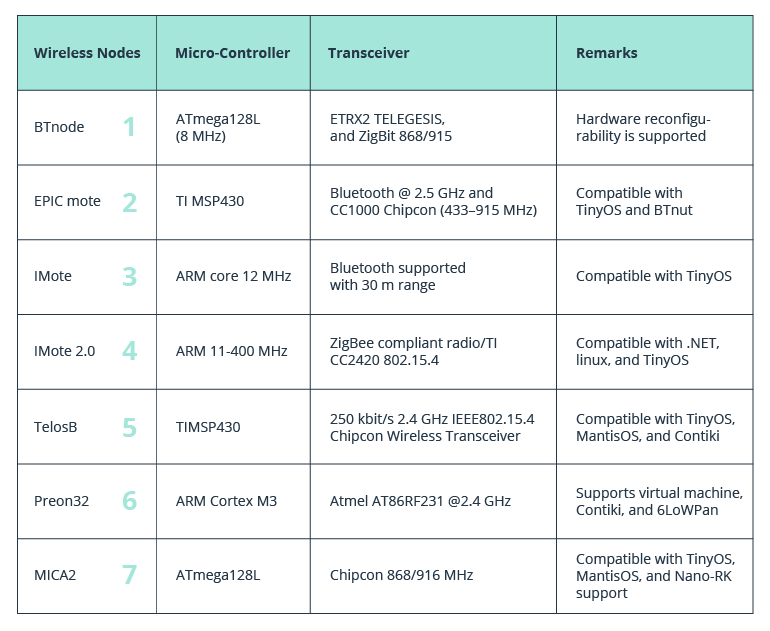Many people have pondered the ultimate purpose of technology. Yet it took us almost 200 years to realize that technology must help people sustain their lives. Is there a better way to live up to this mission than by ensuring efficient, sustainable, and (almost) zero-waste farming? There is not, and cloud computing in agriculture has already been working on this task for years. Cloud software development services are booming. Nonetheless, it seems like edge computing is stepping on cloud farming’s throat with the real-time connectivity boot. Cloud computing in agriculture has been a breakthrough and a game-changer for the industry. Still, its limitations, especially the lack of real-time connectivity, have led to the introduction of edge computing, allowing for a faster and fiercer reaction to perils imposed on agribusinesses by weather, soil, poorly automated machinery, etc. Let’s figure out whether edge computing in agriculture will become a substitute for or a partner to cloud farming in the future. In this article, you’ll find out:
- Still a second to none cloud farming offering
- Cloud farming in agriculture: Practical output
- Challenges on the cloud computing for agriculture agenda
- Edge computing saving cloud farming?
- Edge computing farming: It really works
- So is it cloud farming or edge computing in agriculture?
Still a second-to-none cloud farming offering
John Deere’s Operations Center, Farmers Business Network, Bayer’s Climate FieldView, and many startups and established products have already proven that cloud computing in agriculture is worth our trust. The present and future of global farming are in the clouds. Only the clouds of the future are free of precipitation and full of valuable data. Besides copious projects, there are also numbers backing up the relevance of cloud farming.
According to O’Grady, Langton, and O’Hare, publishing in Artificial Intelligence in Agriculture, the digital farming market, estimated at $6.34 billion in 2017, is currently skyrocketing through the capitalization charts and is projected to reach $13.50 billion in 2023. This amounts to a compound annual growth rate (CAGR) of 12.39%, which is a fascinating result. Furthermore, Microsoft and Amazon are developing their own digital farming platforms, proving that cloud computing in the agriculture industry is an established yet unplowed field of benefits and opportunities.
Indeed, the use of data is rising exponentially in the agriculture industry as AI-powered systems change the rules of the game with intelligent automation. Data has become ubiquitous, as it not only makes farmers’ lives easier but helps them make predictions and react in time. Cloud computing can help farmers with real-time computation, data access, and storage to users without them knowing or worrying about the physical location and configuration of the system that delivers the services.
Cloud farming in agriculture: Practical output
Now that we’ve established the propriety and relevance of cloud technology in farming, let’s discuss the practical results it can provide. In short, cloud computing in agriculture can be used to aggregate data from tools like soil sensors, satellite images, and weather stations to help farmers make better decisions about managing their crops. The cloud’s analytical capabilities also aid farmers in understanding their production environment. For example, interpreting drone data for improved crop management decisions is another benefit that cloud computing in farming delivers. In general, there are seven major deliverables:
- Crop-related information. Data processing can help farmers gather and analyze information on crops grown in the past and present, aiding future decision-making.
- Weather information. Edge computing can provide real-time region-specific weather information, which is crucial for farming, especially given the opportunity for receiving forecasts for specific seasons.
- Soil information. Agricultural decision-making is heavily dependent on soil information, as apart from a soil’s profile, a farmer needs to know the soil’s past behavior and predict future trends. Knowing, for example, whether soil has a tendency to turn acidic or alkaline might be crucial for further farming actions.
- Growth monitoring. Controlling the growth of various crops in different regions at regular intervals gives farmers a lot of information on growth intervals, which is essential for sustainable and lucrative farming.
Expert consultation. Edge computing creates an opportunity for a real-time solutions hub where farmers can discuss their real-time problems. - Farmers’ data. Data from farmers can be captured across a whole region, representing a great opportunity for stepwise agricultural policymaking and strategizing.
- eCommerce. Farming businesses from rural areas can find direct paths to the market, avoiding exploitation. An agricultural management information system based on cloud computing can help farmers sell their products directly.
The benefits are obvious. What’s more, according to SourceTrace, 73% of cloud and edge computing users from non-agricultural industries believe that the cloud and edge computing have reduced infrastructure costs, while 74% claim that they have alleviated internal resource pressure. Still, when it comes to agriculture, there are challenges that cloud technology farming cannot deal with on its own.
Challenges on the cloud computing for agriculture agenda
The opportunities that cloud computing in the agriculture industry offer look quite fascinating. However, three dark clouds are brooding: low security, insufficient speed, and high costs. Nonetheless, industry leaders have managed to deal with these problems with the help of edge computing. Let’s have a closer look at the issues and solutions mentioned above.
Issue 1: Cloud technology farming security
Where there is data, there are always threats. When discussing cloud computing in the agriculture industry, we face the fact that there are abundant places for potential leaks, as IoT systems transmitting data to the cloud consist of many devices. Every time data travels back and forth, the chance of its being violated, stolen, and misused grows exponentially. as you grow your digital farming system.
Solution 1: Edge computing in agriculture
Edge computing is the ultimate recipe for minimizing the risk of data theft or violation, as it lets your data stay within the device that collects it. Meanwhile, all calculations and analysis are carried out locally, as real-time connectivity lets the cloud work the data through without making it travel far. Edge computing in agriculture is a must for improved and custom-built precision mapping that empowers agribusinesses to flourish.
Problem 2: Speed of cloud computing in the agriculture industry
Slow internet connections are one of the most widespread issues in today’s digital agriculture. According to an article published by The Week, “The current limitation for the adoption of cloud computing services is rural internet speeds. Imagine having gigabytes of image data that takes hours — if not days — to get uploaded to the cloud due to slow internet speeds.” Doesn’t sound fun, does it? For example, custom-built smart irrigation systems might suffer a lot from slow connection speeds. Indeed, collecting, transferring, and analyzing data is a time-consuming task that is not always “forgivable” in agribusinesses that require a prompt reaction. Hence, some organizations face the dilemma of choosing between depth of insights and processing speed.
Solution 2: Edge computing in agriculture? You’ve got that one right!
Edge computing revolutionizes data analysis by performing it locally. Each device in the network can analyze the data it collects, providing immediate feedback and thus increasing the processing speed and furthering the depth of insights. However, you need to understand that wireless devices used in the agriculture industry are produced in compliance with various wireless standards. In general, there are seven major types of wireless nodes that are heavily applied in agribusiness.
Common wireless nodes used in the agriculture domain

Source: MDPI
Issue 3: Cost of cloud farming
Cloud computing farming expenses depend on the amount of data generated by the IoT system and then transferred to the cloud and back. With the number of sensors an average digital-driven farm requires on the rise, the cost of cloud computing is only going to increase. For example, a 2020 report by the Agricultural Robotics Laboratory at Valencia Polytechnic University shows that there are 250,000 farms in the United States that cover more than 1,200 million hectares of land with the help of IoT solutions to assist them in advanced crop management. As those farms grow, they need more data points, which require a better “brain” for processing the data, meaning the cost skyrockets.
Solution 3: Edge computing once again ousting cloud farming
Edge computing in agriculture frees businesses from storing mammoth volumes of irrelevant and useless data, as it discards the need for transferring data to the main database. With edge computing, everything can be processed on-premises, cutting cloud storage and bandwidth costs. For example, in 2014, Fujitsu, a Japanese tech giant, established a state-of-the-art vertical farming system outside Hanoi. GRAIN claims that the farm has been a success primarily due to the involvement of edge computing, which lets Fujitsu use the Aeon-based cloud for the farm’s macromanagement while covering all micromanagement tasks with the help of edge computing.
Regardless of how advanced and comprehensive they are, the cloud solutions offered by the biggest industry players are too expensive for even average-sized farms. What’s more, they don’t always deliver on their price-to-quality promises due to internet speed limitations, which are ubiquitous in rural areas. Hence, edge computing is one of the best solutions for enabling efficient IoT infrastructure for connected farming. Considering the challenges, the advantages of edge computing in agriculture become even more obvious.
Will edge computing save cloud farming?
Edge computing cannot save cloud farming, as these two technologies are absolutely different. Edge computing is a distributed computing paradigm that moves data storage and computation closer to data sources, meaning that data does not have to travel far. Thus, farmers can make ad hoc decisions, which is exceptionally valuable in a number of situations. For example, designing and implementing a smart spraying technology system for precise herbicide application requires a lot of relevant real-time information.
All the talk about edge computing superseding the cloud is nothing but vapid words, at least until 5G covers the globe, as Saguna suggests. Meanwhile, edge and cloud computing in agriculture are two completely different technologies that are not interchangeable. The key difference between them is that edge computing is used to process time-sensitive data, which is of the essence in agriculture, while cloud computing works best for data that is not time-sensitive.
Hence, edge computing is surely the best solution for remote locations where there is no centralized internet connection. Local storage and mini data centers will get things done. Indeed, sending real-time images and videos to the public cloud is useless. Meanwhile, harnessing the potential of 5G, edge computing processes data on the spot, producing rather critical real-time information about crops and livestock.
Edge computing farming: It really works
Edge computing has already proven its worth in cutting costs and optimizing yields with AI-driven automation. The thing is that edge computing enables improved computer vision, which, when empowered by a mix of 5G and IoT, gives farmers an opportunity to complete ad hoc tasks automatically and in the most efficient way. This is something cloud computing farming is not capable of. For example, analyzing information from drones requires more than masterfully developed software.
So-called agribots (autonomous tractors and robotic machinery) are another vivid example of the prevalence of edge computing in today’s digital agriculture. According to Eastern Peak, autonomous tractors and robotic machinery can run on autopilot while communicating with nearby sensors to obtain data about the surrounding environment and calculate the most efficient paths to cover the required area, taking into account the type of task, the number of vehicles currently in the field, the size of implements, etc. Furthermore, they are capable of automatically rerouting in case an unexpected obstacle appears in their way. Performing the same task while harnessing the cloud would be harder.
Edge computing offers farmers a plethora of solutions, which might make it easier for them to implement various technologies such as GPS and GIS to automate and refine their day-to-day agricultural operations. Below is a table of edge computing features that come in handy in various agricultural domains.
Usage of edge computing techniques in the domain of agriculture

Source: MDPI
So is it cloud farming or edge computing in agriculture?
Edge computing is good; in fact, it’s a marvelous solution that lets farmers deal with their issues, which is crucial for the agriculture industry. Nonetheless, it seems like cloud computing for agriculture is here to stay, as there is no analytical framework that edge computing could use to substitute for cloud farming completely. Of course, we will face the long-term dominance of data and IoT in farming. Nowadays, there’s no better way towards sustainable agriculture than the one paved with data-driven decisions. Still, we are not going to witness a war between cloud and edge computing.
This is going to be an allied intrusion into fields around the world, as the edge gains momentum and backs up the cloud in locations that lack speed, security, and reasonable pricing. Finally, given that the number of data points involved in fostering the agricultural sector’s progress is only going to grow along with the required speed of their interpretation, we might need something even more than edge and cloud computing. The future is exciting!
If you are interested in moving faster than your competitors or the weather forecasts, contact us. We have the solutions you need and can come up with novel solutions as the need arises.


